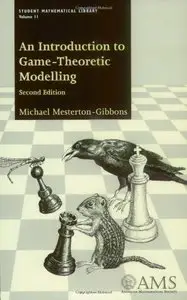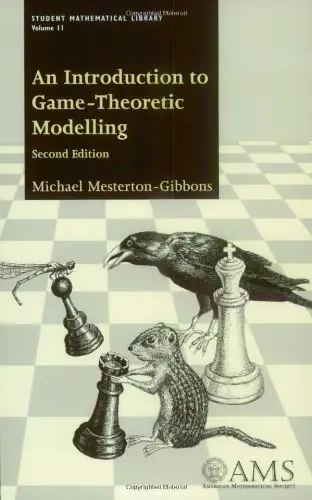An Introduction to Game-Theoretic Modelling (Student Mathematical Library, Vol. 11) by Mike Mesterton-Gibbons
English | 2000 | ISBN: 0821819291, 0201554399 | 368 pages | PDF | 32 MB
English | 2000 | ISBN: 0821819291, 0201554399 | 368 pages | PDF | 32 MB
This book is about using game theory in mathematical modelling. It is an introductory text, covering the basic ideas and methods of game theory as well as the necessary ideas from the vast spectrum of scientific study where the methods are applied. It has by now become generally apparent that game theory is a fascinating branch of mathematics with both serious and recreational applications. Strategic behavior arises whenever the outcome of an individual's action depends on actions to be taken by other individuals - whether human, as in the Prisoners' Dilemma, or otherwise, as in the 'duels of damselflies'. As a result, game-theoretic mathematical models are applicable in both the social and natural sciences.In reading this book, you can learn not just about game theory, but also about how to model real situations so that they can be analyzed mathematically. Mesterton-Gibbons includes the familiar game theory examples where they are needed for explaining the mathematics or when they provide a valuable application. There are also plenty of new examples, in particular from biology, such as competitions for territory or mates, games among kin versus games between kin, and cooperative wildlife management. Prerequisites are modest. Students should have some mathematical maturity and a familiarity with basic calculus, matrix algebra, probability, and some differential equations.As Mesterton-Gibbons writes, 'The recurring theme is that game theory is fun to learn, doesn't require a large amount of mathematical rigor, and has great potential for application'. This new edition contains a significant amount of updates and new material, particularly on biological games. An important chapter on population games now has virtually all new material. The book is absolutely up-to-date with numerous references to the literature. Each chapter ends with a commentary which surveys current developments.



